Fat Hen / Spring / Summer / Autumn / Edible
Fat Hen (Chenopodium Album) Identification
A delicious fast growing native annual. Very common.
Common Names
Fat Hen, White goose foot, lambs quarters, wild spinach.
Botanical Name
Chenopodium Album
Scientific Classification
Kingdom – Plantae
Order – Caryophyllales
Family – Amaranthaceae
Physical Characteristics for Fat Hen
Leaves
Oval to diamond shaped leaves with wavy lobed edges, they are blue/green with almost a silvery tint. 3-7cm long, 2-6cm wide. The silvery tint is caused by tiny waxy, crystals on the leaves that are used to repel water.
Flowers
Tiny white/green flowers growing in spirals on spikes that originate from the leaf base. The flower develops into tens of thousands of tiny black seeds.
Habitat
Recently disturbed ground, hedgerows, gardens.
Known Hazards
Fat Hen is quite high in oxalic acid so should be eaten in moderation.
Some of the best patches can be found around arable farm edges, so care should be taken to check whether any chemicals have been applied.
Could be Confused with
Good King Henry (Blitum bonus-henricus) and other members of the Chenopodium family but these are all edible and taste pretty similar.
Edible Uses
Fat Hen is very high in vitamin A, calcium, potassium, and phosphorus and is a good source of protein, trace minerals, B-complex vitamins, vitamin C, iron, and fibre.
All of the aerial parts of Fat Hen are edible and tasty. The leaves can be used as an excellent alternative to spinach. The flowers can be added to salads or treated in the same way as purple sprouting broccoli.
The seeds can be used as a native alternative to quinoa (its close relative). But the seeds should be thoroughly washed to remove the outer coating as it contains high levels of saponins which are very bitter.
Notes on Herbal Uses
The leaves have been used as a poultice to soothe burns.
Extra notes from the Foragers
Chenopodium album has a complex taxonomy and has been divided in numerous micro-species, sub-species and varieties and it is difficult to differentiate between them. But this species has and is still used worldwide as leafy green or as a grain. Before spinach was introduced to the UK this was our green of choice. Its use dates back thousands of years. The seeds of Fat Hen were found inside the stomach of Tollund man who was found in a Danish bog and is believed to date from 400BC.
We find masses of this stuff growing throughout the gaps in between farmers more conventional crops, it often gets pulled and weeded out as a pest but wouldn’t it be great if, as well as growing the regular crops, we started holding on to this weed to eat as well. It seems like it would be making a food source out of something that is currently discarded!



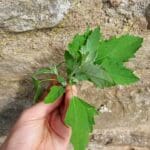
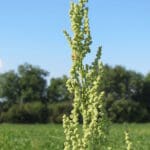
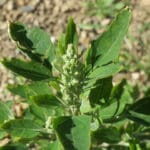
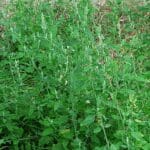
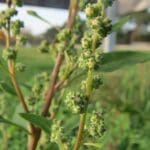
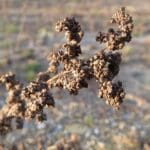



Leave a Reply
You must be logged in to post a comment.